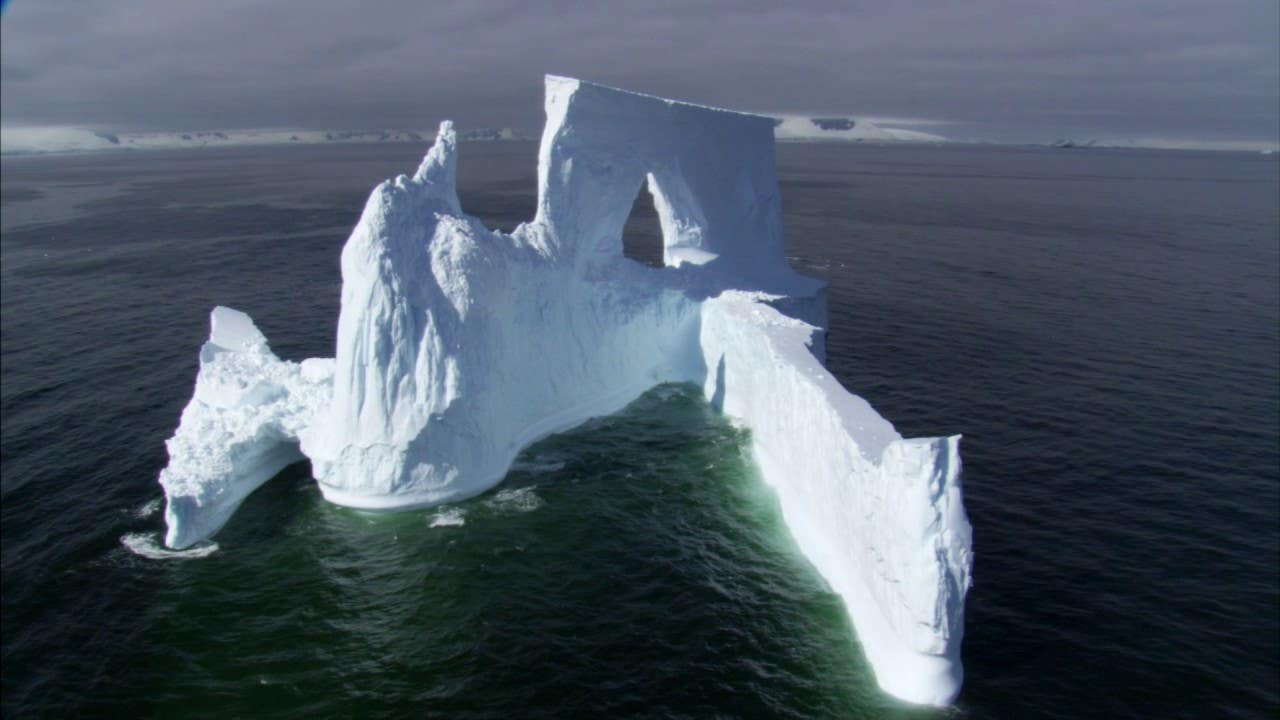New form of ice discovered! Likely found in water-rich planets outside our solar system
Researchers have discovered a new form of ice, redefining the properties of water and our understanding of distant, water-rich planets.

[Mar 20, 2022: Natalie Bruzda, University of Nevada, Las Vegas]
Research findings could have implications for our understanding of distant, water-rich planets. (CREDIT: Creative Commons)
UNLV researchers have discovered a new form of ice, redefining the properties of water at high pressures.
Solid water, or ice, is like many other materials in that it can form different solid materials based on variable temperature and pressure conditions, like carbon forming diamond or graphite. However, water is exceptional in this aspect as there are at least 20 solid forms of ice known to us.
A team of scientists working in UNLV’s Nevada Extreme Conditions Lab pioneered a new method for measuring the properties of water under high pressure. The water sample was first squeezed between the tips of two opposite-facing diamonds—freezing into several jumbled ice crystals. The ice was then subjected to a laser-heating technique that temporarily melted it before it quickly re-formed into a powder-like collection of tiny crystals.
By incrementally raising the pressure, and periodically blasting it with the laser beam, the team observed the water ice make the transition from a known cubic phase, Ice-VII, to the newly discovered intermediate, and tetragonal, phase, Ice-VIIt, before settling into another known phase, Ice-X.
UNLV physicists pioneered a new laser-heating technique in a diamond anvil cell (pictured here) as part of their discovery of a new form of ice. (CREDIT: Chris Higgins)
Related Stories:
Zach Grande, a UNLV Ph.D. student, led the work which also demonstrated that the transition to Ice-X, when water stiffens aggressively, occurs at much lower pressures than previously thought.
While it’s unlikely we’ll find this new phase of ice anywhere on the surface of Earth, it is likely a common ingredient within the mantle of Earth as well as in large moons and water-rich planets outside of our solar system.
The team’s findings were reported in the journal Physical Review B.
Takeaways
The research team had been working to understand the behavior of high-pressure water that may be present in the interior of distant planets.
To do so, Grande and UNLV physicist Ashkan Salamat placed a sample of water between the tips of two round-cut diamonds known as diamond anvil cells, a standard feature in the field of high pressure physics. Applying a little bit of force to the diamonds enabled the researchers to recreate pressures as high as those found at the center of the Earth.
By squeezing the water sample between these diamonds, scientists drove the oxygen and hydrogen atoms into a variety of different arrangements, including the newly discovered arrangement, Ice-VIIt.
Not only did the first-of-its-kind laser-heating technique allow scientists to observe a new phase of water ice, but the team also found that the transition to Ice-X occurred at pressures nearly three times lower than previously thought — at 300,000 atmospheres instead of 1 million. This transition has been a highly debated topic in the community for several decades.
“Zach’s work has demonstrated that this transformation to an ionic state occurs at much, much lower pressures than ever thought before,” Salamat said. “It’s the missing piece, and the most precise measurements ever on water at these conditions.”
The work also recalibrates our understanding of the composition of exoplanets, Salamat added. Researchers hypothesize that the Ice-VIIt phase of ice could exist in abundance in the crust and upper mantle of expected water-rich planets outside of our solar system, meaning they could have conditions habitable for life.
Collaborators at the Lawrence Livermore National Laboratory used a large supercomputer to simulate the bond rearrangement—predicting that the phase transitions should happen precisely where they were measured by the experiments.
Additional collaborators include UNLV physicists Jason Steffen and John Boisvert, UNLV mineralogist Oliver Tschauner, and scientists from the Argonne National Laboratory and the University of Arizona.
Note: Materials provided above by University of Nevada, Las Vegas. Content may be edited for style and length.
Like these kind of feel good stories? Get the Brighter Side of News' newsletter.
Tags: #New_Discoveries, #Planets, #Ice, #Water, #Space, #Solar_System, #Science, #Research, #Lasers, #Astronomy, #The_Brighter_Side_of_News
Joseph Shavit
Head Science News Writer | Communicating Innovation & Discovery
Based in Los Angeles, Joseph Shavit is an accomplished science journalist, head science news writer and co-founder at The Brighter Side of News, where he translates cutting-edge discoveries into compelling stories for a broad audience. With a strong background spanning science, business, product management, media leadership, and entrepreneurship, Joseph brings a unique perspective to science communication. His expertise allows him to uncover the intersection of technological advancements and market potential, shedding light on how groundbreaking research evolves into transformative products and industries.



